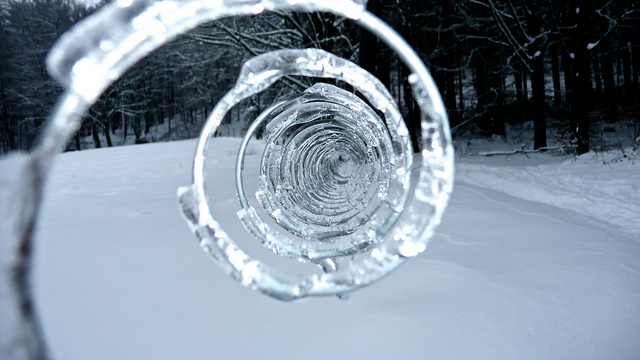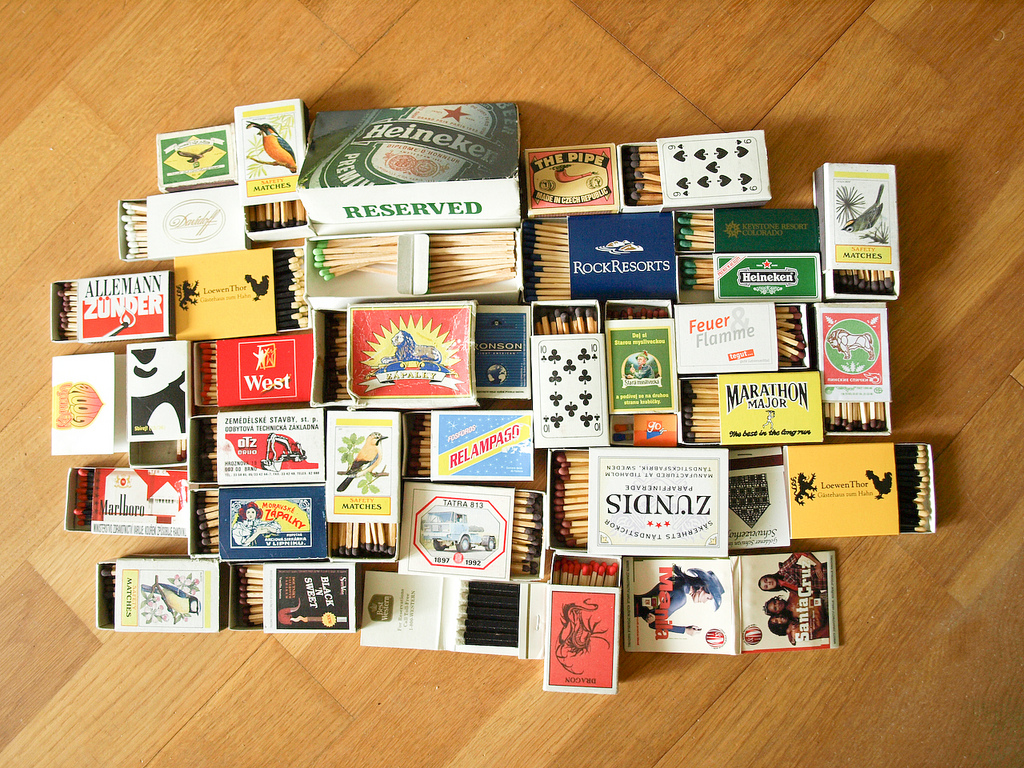
Introduction to JavaScript
Class 3
Loops

Photo credit: Steve Pires cc
While loops
while will repeat the same code over and over until some condition is met.
var bottlesOfBeer = 99;
while (bottlesOfBeer > 0) {
console.log(bottlesOfBeer + ' bottles of beer on the wall');
bottlesOfBeer = bottlesOfBeer - 1;
}Infinite Loops
Make sure something changes in the loop, or your loop will go on forever...

Photo credit: Samuel John cc
For loops
for loops are very similar, but you declare a counter in the statement.
// will count 1 to 10
for (var i = 1; i <= 10; i++) {
console.log(i);
}Loops and logic
You can add other statements or logical operators inside the loops.
// Count from 1 to 100
for (var i = 1; i <= 100; i++) {
if (i % 3 === 0) {
// Says 'Fizz' after multiples of three
console.log(' Fizz');
} else if (i % 5 === 0) {
// Says 'Buzz' after multiples of five
console.log(' Buzz');
} else {
console.log(i);
}
}Break
To exit a loop, use the break statement.
// Count from 100 to 200
for (var i = 100; i <= 200; i++) {
console.log('Testing ' + i);
//Stop at the first multiple of 7
if (i % 7 == 0) {
console.log('Found it! ' + i);
break;
}
}Let's Develop It
Write a loop that gives you the 9's times table,
from 9 x 1 = 9 to 9 x 12 = 108.
Finish early? Try using a loop inside a loop to write all the times tables, from 1 to 12.
Arrays

Photo credit: Jesus Solana cc
Arrays
Arrays are ordered lists of values.
var arrayName = [value0, value1];You can put different types of data into an array.
var rainbowColors = ['Red', 'Orange', 'Yellow', 'Green',
'Blue', 'Indigo', 'Violet'];
var lotteryNumbers = [33, 72, 64, 18, 17, 85];
var myFavoriteThings = ['Broccoli', 1024, 'Sherlock'];Array Length
The length property tells you how many things are in an array.
var rainbowColors = ['Red', 'Orange', 'Yellow', 'Green',
'Blue', 'Indigo', 'Violet'];
console.log(rainbowColors.length);Using Arrays
You can access items with bracket notation by using the position of the item you want.
var rainbowColors = ['Red', 'Orange', 'Yellow', 'Green',
'Blue', 'Indigo', 'Violet'];
var firstColor = rainbowColors[0];
var lastColor = rainbowColors[6];JS arrays are zero-indexed, so counting starts at 0.
Changing arrays
You can use bracket notation to change an item in an array
var myFavoriteThings = ['Broccoli', 1024, 'Sherlock'];
myFavoriteThings[0] = 'Asparagus';Expanding arrays
Arrays do not have a fixed length. You can use push to add something to an array.
var myFavoriteThings = ['Broccoli', 1024, 'Sherlock'];
myFavoriteThings.push('Dancing');Let's Develop It
Create an array of your favorite foods.
Print a few values onto your screen.
Arrays + loops = BFF

Iterating through arrays
Use a for loop to easily work with each item in an array.
var rainbowColors = ['Red', 'Orange', 'Yellow', 'Green',
'Blue', 'Indigo', 'Violet'];
for (var i = 0; i < rainbowColors.length; i++) {
console.log(rainbowColors[i]);
}Let's Develop It
Use a for loop to print a list of all your favorite foods.
Objects

Photo credit: Jirí Volejník cc
Objects
Objects let us store a collection of properties.
var objectName = {
propertyName: propertyValue,
propertyName: propertyValue
};
var user = {
hometown: 'Atlanta, GA',
hair: 'Auburn',
likes: ['knitting', 'code'],
birthday: {month: 10, day: 17}
};Accessing Objects
You can retrieve values using dot notation
var user = {
hometown: 'Atlanta, GA',
hair: 'Auburn'
};
var usersHometown = user.hometown;Or using bracket notation (like arrays)
var usersHair = user['hair'];Changing Objects
You can use dot or bracket notation to change properties
var user = {
hometown: 'Atlanta, GA',
hair: 'Auburn'
};
user.hair = 'blue';Add new properties
user.married = true;
Or delete them
delete user.married;Arrays of Objects
Because arrays can hold any data type, they can also hold objects.
var users = [
{name: 'Jolene', age: 21},
{name: 'Alexa', age: 18}
];
for (var i = 0; i < users.length; i++) {
var user = users[i];
console.log(user.name + ' is ' + user.age + ' years old.');
}Objects
Just like other data types, objects can be passed into functions:
var jolene = {
age: 21,
hairColor: 'Auburn',
likes: ['pizza', 'tacos'],
birthday: {month: 3, day: 14, year: 1995}
}
function describeUser(user) {
console.log('You are ' + user.age + ' years old with '
+ user.hairColor + ' hair.');
}
describeUser(jolene);Let's Develop It
Create an object to hold information on your favorite recipe. It should have properties for:
recipeTitle(a string)servings(a number)ingredients(an array of strings)directions(a string)
Try displaying some information about your recipe.
Bonus: Create a loop to list all the ingredients.
Object methods
Objects can also hold functions.
var jolene = {
age: 21,
hairColor: 'Auburn',
talk: function() {
console.log('Hello!');
},
eat: function(food) {
console.log('Yum, I love ' + food);
}
};
Call object methods using dot notation:
jolene.talk();
jolene.eat('pizza');Let's Develop It
Go back to your recipe object. Add a function called letsCook that says "I'm hungry! Let's cook..." with the name of your recipe title.
Call your new method.
You did it!

Resources
- JavaScript Guide, from the Mozilla Developers Network.
- Code Academy, with interactive JavaScript lessons to help you review.